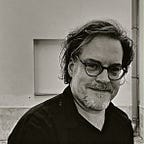Review: Dr. John Lights Up a Winter’s Night Up North
By Bradley Bambarger <2005>
Authentic New Orleans musicians know many muses. They are, by turns, jazzers and bluesmen (or women), masters of funk and rumba, rock’n’rollers and balladeers. Moreover, for this special breed, the roles of popular entertainer and fine artist aren’t mutually exclusive.
All those streams of sound wind into a culture as deep and broad as the Mississippi River, and there are few musicians who carry this cumulative spirit inside them like Dr. John. The Community Theatre in Morristown, N.J., hardly exudes a funky air. Yet the venerable singer/pianist and his band of Crescent City natives moved a packed house as if the cold Northeast were down home at Mardi Gras.
Dr. John — a/k/a 64-year-old Mac Rebennack, who derived his stage name from a 19th-century voodoo shaman — exudes an aura of eminence, like someone in possession of a secret power. Nattily dressed and aided by a baroque walking stick, he made his way on stage in a slow roll. The path had been prepared by a funk instrumental laid down by his red-hot backing trio, the Lower 911 Band, its name a confluence of the emergency hotline and the rhythm section’s home ground of New Orleans’ lower Ninth Ward.
The sheer vitality of Dr. John’s hands on a keyboard would be hard to oversell. Although he has enjoyed a far more wide-ranging career than his predecessors, his playing is steeped in the lineage of the New Orleans “piano professors,” the bordello-bred virtuosos typified by Professor Longhair. Dr. John can invest the simplest pop song with sophisticated jazz harmonies, as well as imbue an off-hand riff with the “Latin tinge” that Jelly Roll Morton thought essential to New Orleans music.
For all his aplomb on the ivories, the concert took fire when Dr. John turned to the small organ next to his grand piano for his ingenious take on Duke Ellington’s “Caravan.” If Dr. John were playing the organ at a funeral, he would be trying to raise the dead, not lay the soul to rest. He twisted the indelible melody around and around — first lovingly, then irreverently making his instrument growl and howl as the guitar, bass and drums beat a steamy tropical groove underneath.
Dr. John’s criminally undervalued 2000 album Duke Elegant brims with wonderfully counterintuitive, even daring versions of Ellington tunes, and he followed “Caravan” with “Do Nothin’ Until You Hear From Me.” The Mardi Gras beads on the mike stand swung in time as Dr. John re-imagined the song as a deep-soul ballad. His rolling piano solo was rich with sagacious chord-voicings that Ellington would have no doubt appreciated, and Dr. John’s sly, slurred vocals were the essence of street-wise romance.
Because Dr. John sang like an old man when he was young, his voice sounds virtually ageless now. But a constant source of mirth for the audience was semi-intelligibility of the singer’s grizzled between-song patter, drawled in an inimitable patois of New Orleans slang and the age-old lingo of hipster musicians.
Brought up playing in bars, Dr. John shrugged off the tepid response to one of the night’s few numbers that was long on groove and short on tune. He said, in so many words, “If ya’ll ain’t diggin’ what we’re laying down at any particular moment in time, go get yo’ selves a drink. When you come back, we bound to be doing something to yo’ likin’.” Many laughed, hardly anyone left.
A few originals from Dr. John’s latest tribute album to his hometown, N’Awlinz: Dis Dat or D’Udda, dotted the set. “Life’s a One Way Ticket” laid out the Big Easy philosophy of living in the moment for the moment. The singer capped the song with a typically piquant reference to being unable to take worldly riches with you, anyway: “I ain’t seen an armored car follow a funeral yet.”
Seemingly bemused at playing for a theater audience, drummer Herman Ernest III — the band’s avuncular cheerleader — made repeated calls for the crowd to raise its collective bottom. The tune that enabled the audience to cast inhibitions aside was a version of Leadbelly’s “Goodnight Irene” that seemed to channel the full panorama of American music. When the band burst into harmony for the chorus, the fallen-angel splendor of their voices was typical of musicians for whom playing in bars and singing in church go hand in hand. And Dr. John’s piano trills summoned all sorts of ghosts.
Dr. John has played “Right Place, Wrong Time” at probably every one of his shows since the song was a hit in the early ’70s. Yet Friday’s looser, gutbucket rendition was not only fresh but blew the recorded version away. That and a cover of Sly Stone’s “Thank You (Falettinme Be Mice Elf Agin)” — syncopated to rival the original — had the crowd on its feet again. A rousing “Glory, Glory Hallelujah” then even saw one loose-limbed man get religion solo, right in the aisle.
The two-hour show didn’t make room for “Such a Night,” “Basin Street Blues” or “Iko Iko,” but no one seemed to leave unsatisfied. The night’s highlight for this listener was Dr. John’s rearrangement of “When the Saints Go Marching In” as a gorgeous, slow-burn dirge, showing once again what an evergreen response the man has to his heritage. It seemed soulful enough to coax St. Peter into letting the Pearly Gates open even for a sinner.
(Originally published in 2005 in The Star-Ledger of New Jersey… Dr. John died in 2019 at age 77.)
